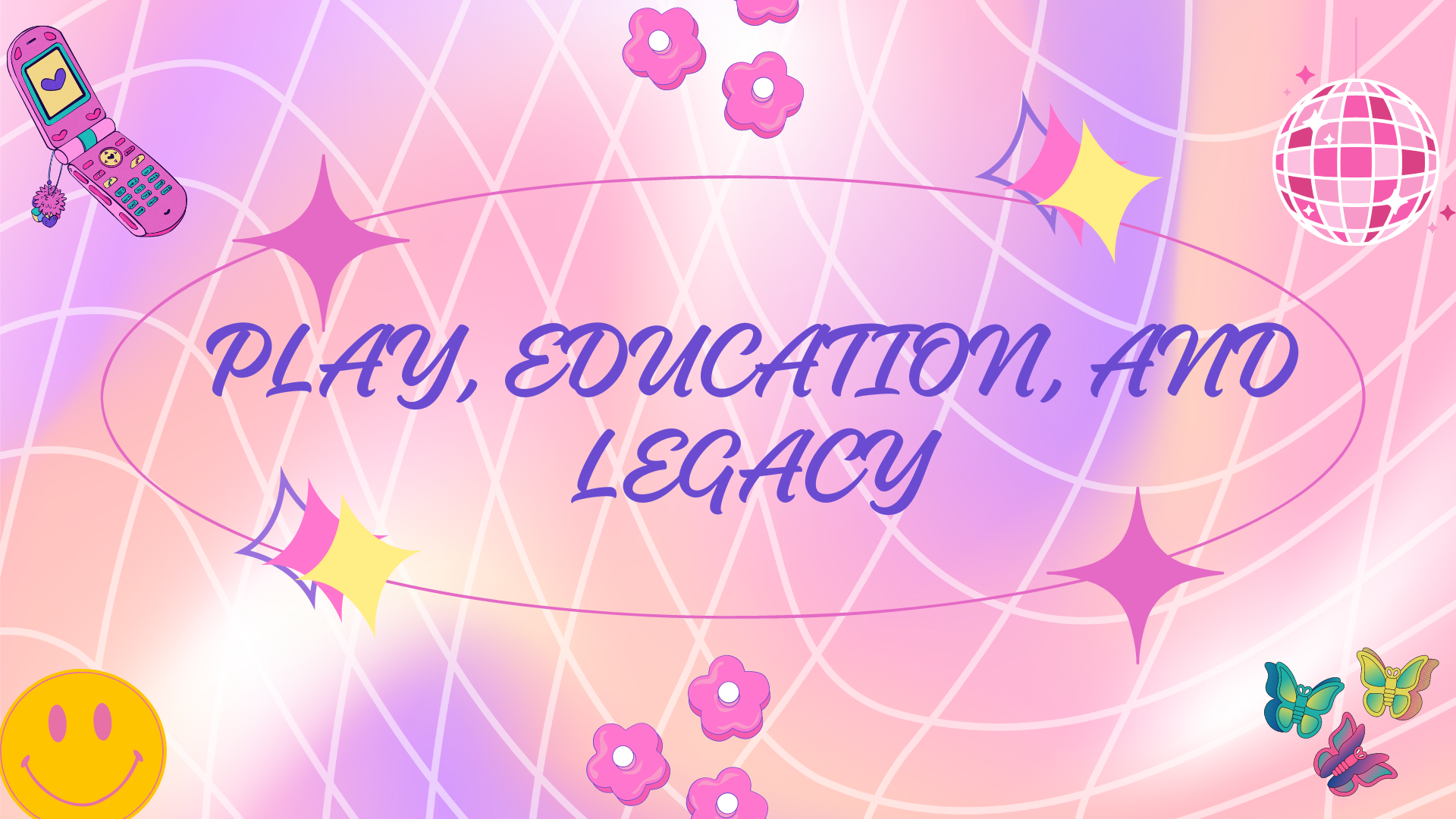
Play, Education, and Legacy
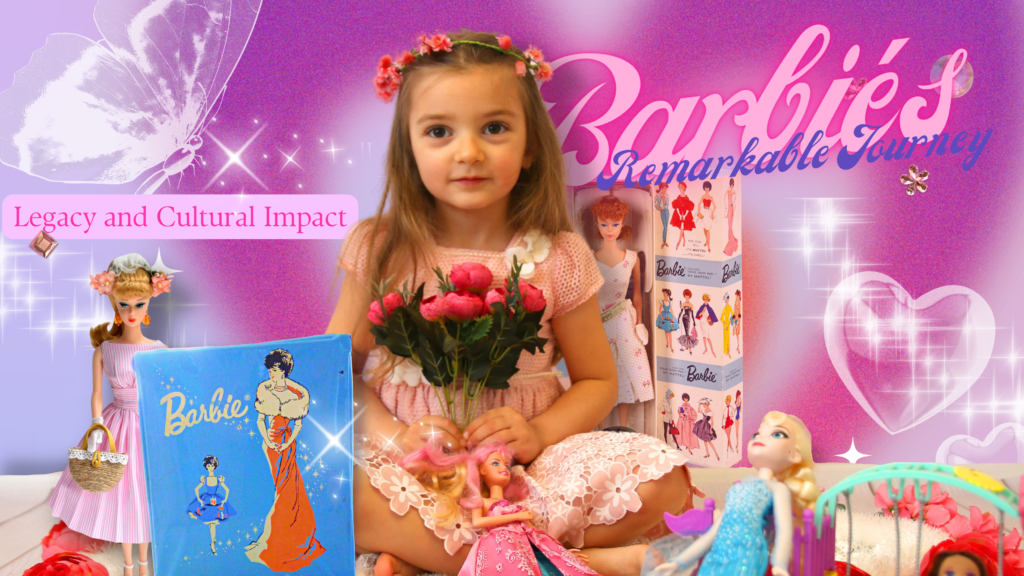
Beyond being a doll, Barbie has transformed into a versatile educational tool that bridges the gap between fun and learning. Teachers and parents alike have harnessed the potential of Barbie dolls to cultivate essential skills in children. By incorporating Barbie into lessons and activities, educators have tapped into a world of historical reenactments, imaginative storytelling, and exploration of complex social issues.
Barbie’s appeal as a storyteller is undeniable. From her diverse array of careers to her rich interpersonal relationships, she serves as a catalyst for engaging narratives. Teachers have harnessed this narrative power to turn history lessons into vivid and relatable experiences. Whether exploring the life of pioneering women or reconstructing historical events, Barbie facilitates immersive learning that sparks curiosity and fosters critical thinking. Let’s take a look at how MMG’s Media Manager, Serena Ahlquist, and Content Designer, Kasey Bartelt, recall their time in childhood with Barbie.
Play and Imagination:
Barbie’s open-ended play possibilities have encouraged creativity and imagination in children. Through playing with Barbie, girls could construct and narrate their own stories, scenarios, and adventures, fostering cognitive and social development.
For example, Serena said that Barbie was a staple in her childhood. With being blonde and having blue eyes, just like Serena, she felt connected with Barbie as well as, when Barbie the Nutcracker movie came to DVD, Barbie was a ballerina, just like Serena was, so the connection to her life and to Barbies realities grew stronger.

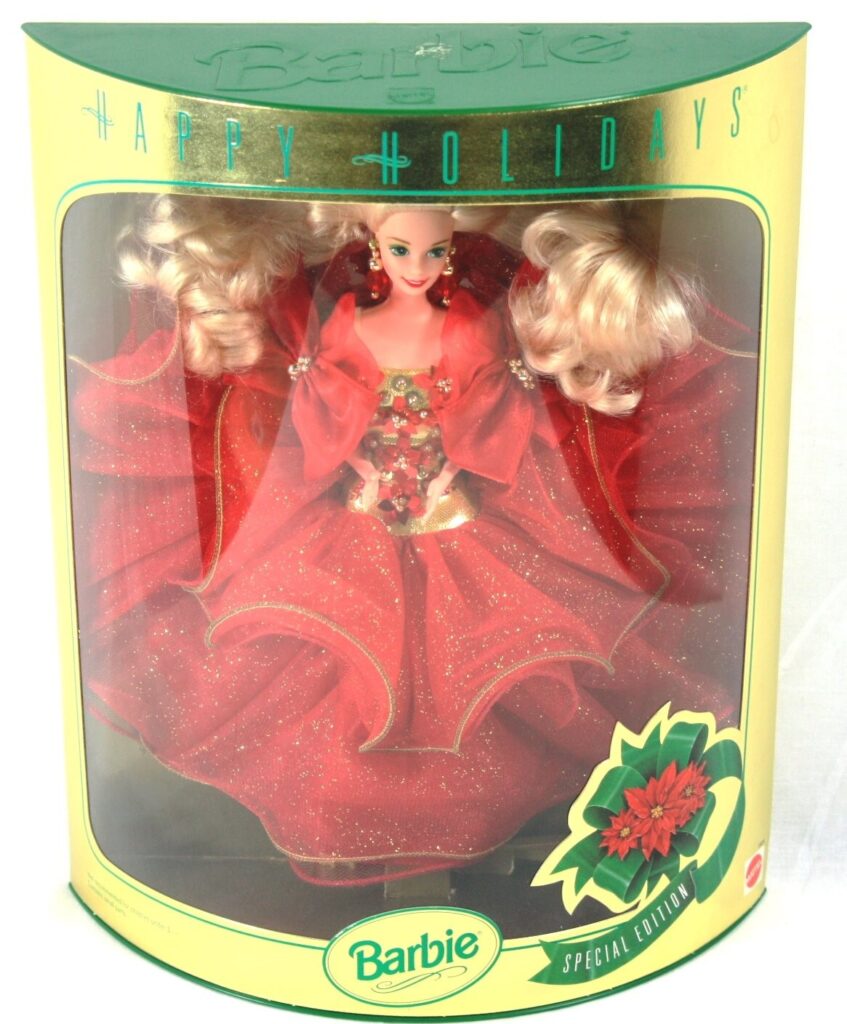
Kasey’s Christmas Barbie
Parental Empowerment:
Barbie’s evolution has allowed parents to engage in discussions with their children about important topics such as body image, diversity, and career aspirations. Parents can use Barbie dolls as a starting point for conversations that encourage critical thinking and self-awareness.
Kasey states “Every year, Barbie released a Holiday Barbie. My grandmother started the Christmas I was born by collecting every single year. Once I was old enough, she started to wrap them and then I would be allowed to look at them. My grandmother almost always then went and bought 2. One she bought for me to keep, and the other one I was able to play with if I wanted to. To this day, we still have the Barbies in the original boxes.”
Social Media and Online Communities:
The rise of social media has allowed Barbie enthusiasts and collectors to connect and share their experiences. Online communities have further discussions about the impact of Barbie dolls on identity, empowerment, and representation.


Collaborations and Partnerships:
Barbie’s collaborations with various brands, organizations, and artists have expanded her influence into different domains. These partnerships often aim to promote positive values such as education, creativity, and social change.
Serena states, “When Barbie came out and had all these different lives, it was so amazing as a child to see it actually relate to my life. My cousin has horses and I always thought that was so cool, so when Equestrian Barbie came to the stores, it reminded me of my life.”
Body Positivity and Inclusivity Movements:
The modern emphasis on body positivity and inclusivity has influenced Barbie’s approach to design and representation. Barbie’s commitment to reflecting a wider range of body types and skin tones aligns with broader societal conversations around acceptance and representation.
Serena recalls the first time she saw inclusivity on a Barbie, “I remember when I saw the first African American Barbie and Salsa Dancer Barbie and I thought to myself, that looks like my friends at school! Now they have a Barbie to play with, that looks like them too!”


Reimagining Traditions:
Barbie’s ability to take on various roles and personas allows for the reimagining of traditional stories and narratives. This can promote conversations about historical and cultural contexts, encouraging critical thinking and cultural awareness.
Critiques and Resistance:
Despite Barbie’s attempts to evolve, there continue to be critiques and resistance from various perspectives. Some argue that the fundamental design of Barbie still perpetuates unrealistic beauty standards or reinforces gender stereotypes, prompting ongoing discussions about the role of toys in shaping values.
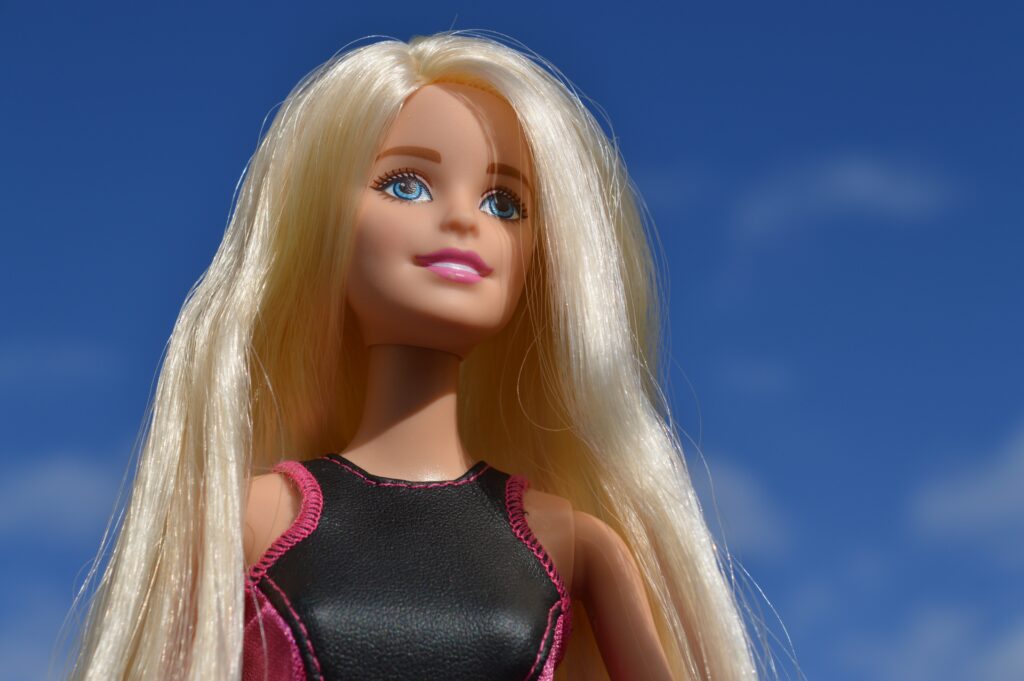

Legacy and Generational Influence:
As new generations of children play with Barbie dolls; their values and perceptions are influenced by the changes that have been made to the doll’s design and messaging over the years. This intergenerational influence highlights how toys can carry cultural legacies and shape perspectives across time.
Kasey recalls, “My experience with Barbies is a little different. I was never truly into playing with Barbies. It has always been something that I enjoy playing with my nieces. It’s nice to see them playing with the same toys I used to have in my childhood.”
Media Literacy and Critical Thinking:
Barbie’s presence in popular culture and media has prompted discussions about media literacy and critical thinking. As children engage with Barbie-related content, parents and educators can encourage them to think critically about the messages being conveyed and the potential impact on their perceptions.


Serena’s First Birthday
Parent-Child Relationships:
Parents’ decisions regarding whether to introduce Barbie dolls to their children and how to address the associated values have led to meaningful discussions about family values, gender dynamics, and individual identity.
Serena states, “When I was younger I honestly did not think about Barbies waist or body image, I just saw a blonde hair, blue eyed ballerina doll and was stunned because she looked like me! In present time I can see how body positive talks about Barbie, could be discussed with children.”
Globalization and Local Values:
Barbie’s global distribution has led to discussions about the influence of Western culture on local values and beauty standards in different parts of the world. These conversations highlight the interconnectedness of culture and play.
Educational Value:
Beyond fashion and play, Barbie has been used as an educational tool in some contexts. Teachers and educators have utilized Barbie dolls to teach history, storytelling, and social issues.
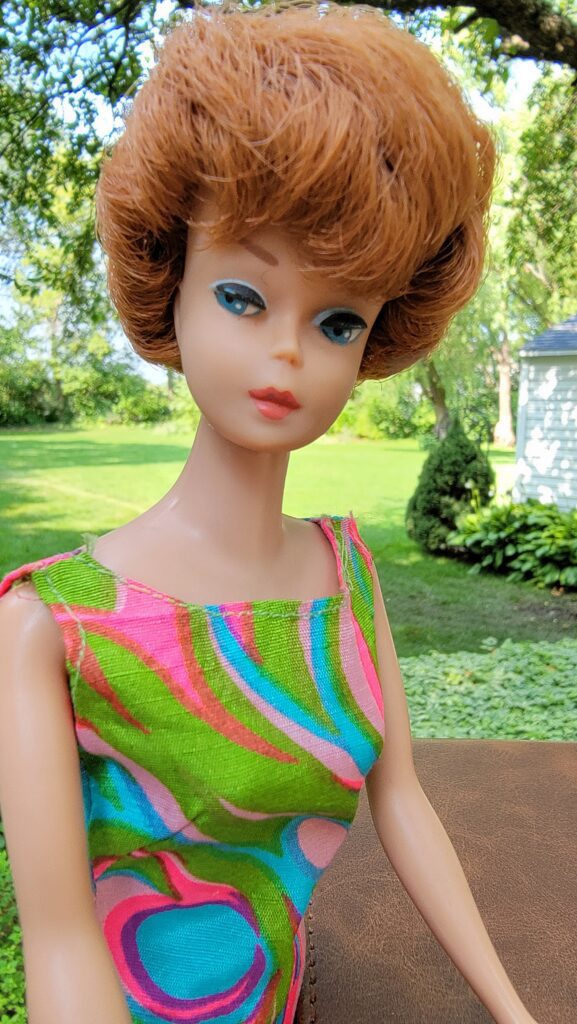
MMG’s COO First Barbie
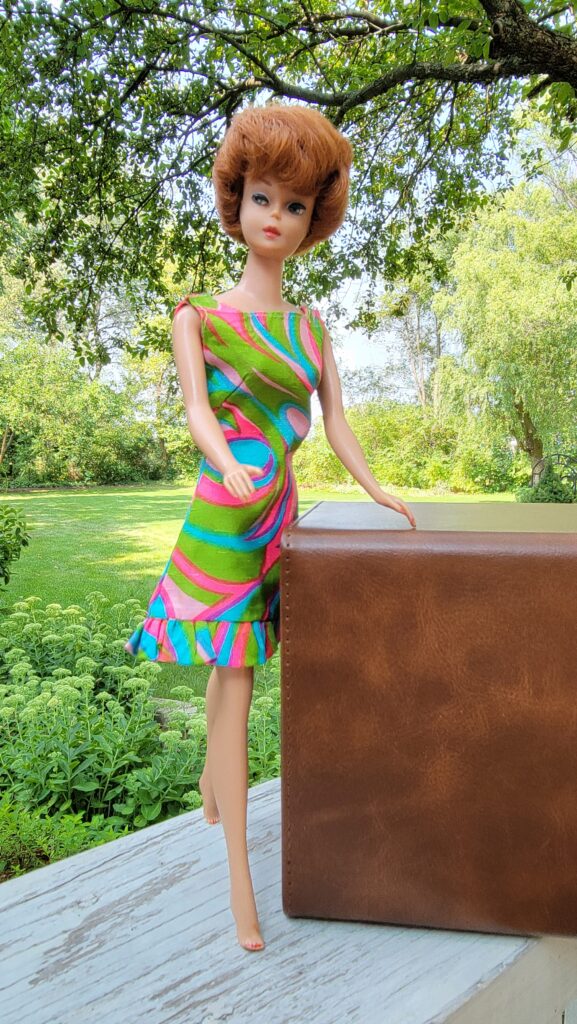
MMG’s COO First Barbie
Evolution of Play Patterns:
As play patterns change over time, Barbie’s role in children’s imaginative play has also evolved. Discussions about the balance between screen-based activities and traditional play connect with broader societal conversations about technology use and child development.
Serena Recalls, “When Barbie video games came out it was a DVD that we put into the computer and we just played it for a good amount of time before my mom would have something else for us to do. With technology in present day I am sure there is so many Barbie games out there, and let’s face it, my inner child is jealous, but also grateful I got to experience Barbie as a materialistic thing.”
Parental Mediation:
Parents often mediate their children’s interactions with Barbie dolls, guiding them in making choices about playtime, outfits, and scenarios. These interactions offer opportunities for parents to teach empathy, communication skills, and respectful behaviors.
Serena recalls her first birthday, “Seeing photos of my first birthday and having the Barbie cake, it makes me realize how much Barbie had an influence on girls around the world and also how delicate the Barbie brand is for young women.”
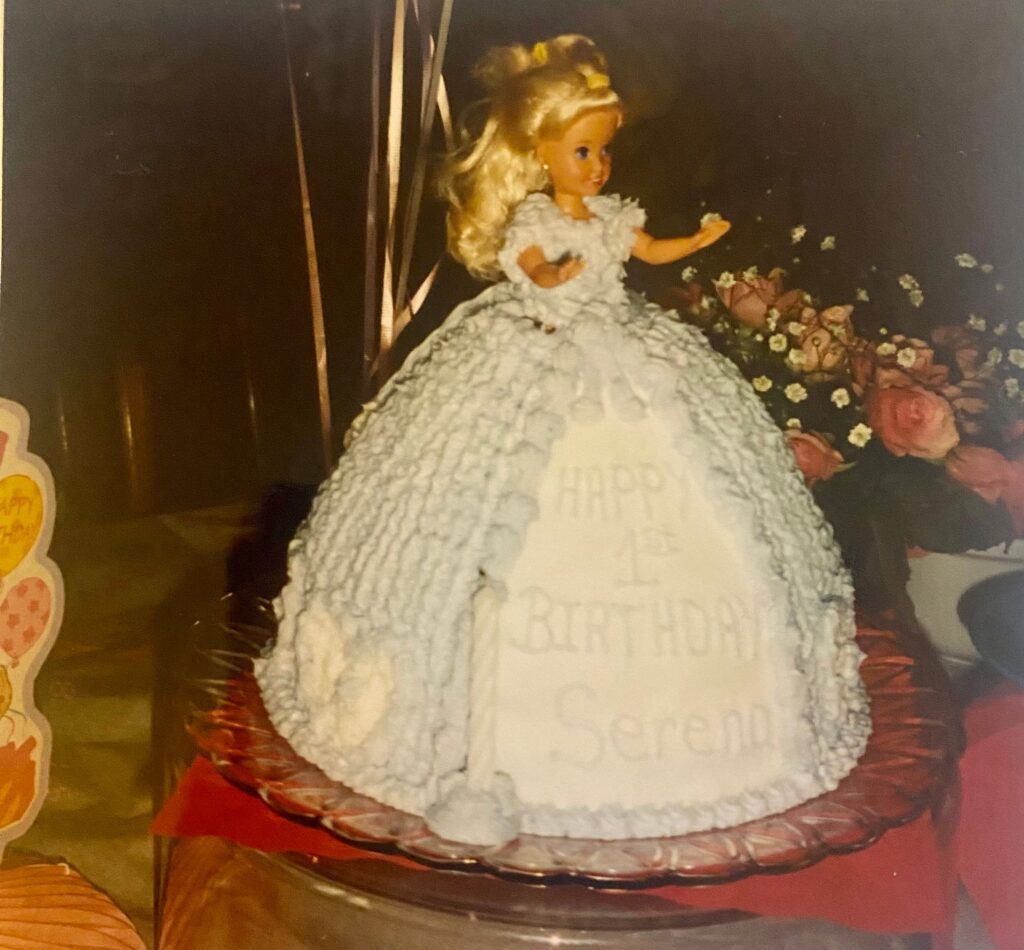
Serena’s First Birthday Cake
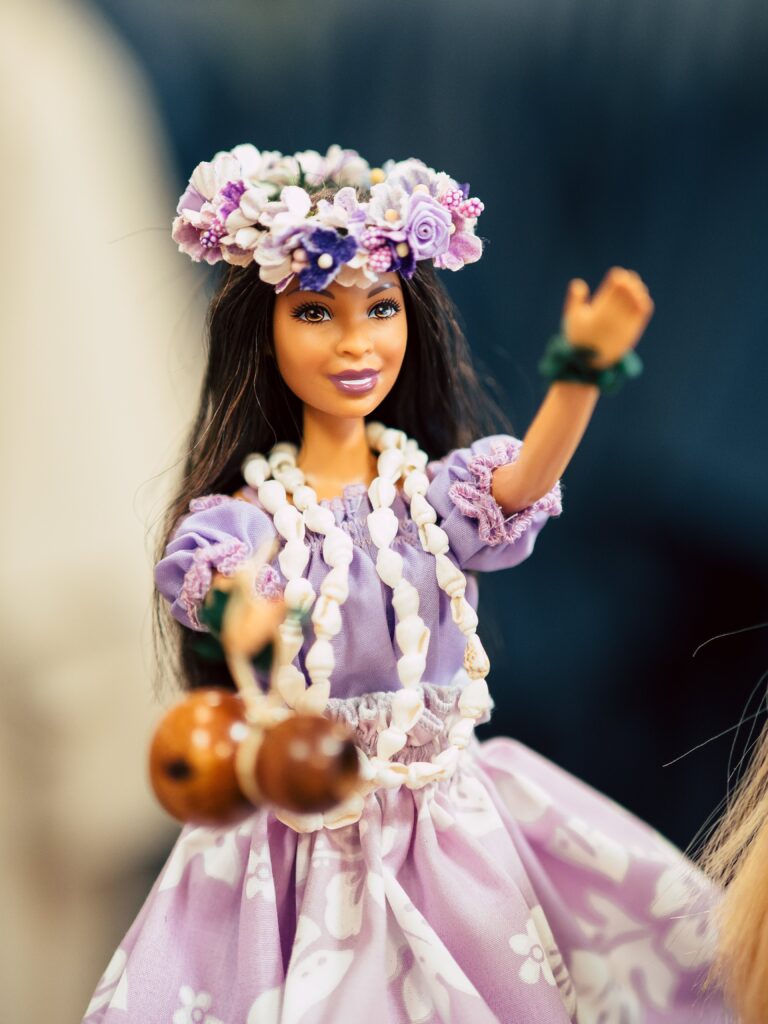
Empowerment through Play:
Barbie’s diverse career choices and personas have the potential to empower young girls by showing them a wide range of possibilities for their futures. Playing with Barbie can encourage girls to explore various interests and envision themselves in different roles.
Serena states, “I remember seeing Barbie as a doctor, teacher, mother, scuba instructor, and I thought to myself, wow if Barbie can be all those things, so can I!”
Interplay with Other Toys:
Barbie’s interactions with other toys, both within and outside the Mattel lineup, create unique narratives and play experiences. These combinations can reflect evolving interests, trends, and the way children engage with diverse forms of play.
Narratives and Storytelling:
Barbie dolls often become characters in children’s imaginative stories and narratives. These stories can be a way for children to explore and process emotions, relationships, and societal dynamics.
Collective Memory and Nostalgia:
The continued popularity of Barbie dolls sparks nostalgia for adults who grew up with them. This nostalgia can lead to conversations about generational shifts in values and the enduring impact of childhood playthings.
“I think after the Barbie Movie came out, all of these women are now understanding the meaning of Girlhood and how most of us all lived a little bit of the same, innocent, girly, childhood with Barbie.” – Serena


Play as Social Learning:
Play with Barbie dolls can be a form of social learning where children mimic and experiment with social interactions, relationships, and scenarios. This can contribute to their understanding of social roles and behaviors.
Legacy and Cultural Impact:
Barbie’s legacy extends beyond the physical dolls themselves. The doll has left an indelible mark on popular culture, influencing everything from fashion to art to social commentary.

In essence, Barbie dolls have served as a mirror reflecting the evolving values and expectations of the society, they’ve been a part of. Over time, Barbie’s creators have responded to societal feedback and shifted their approach, attempting to balance the role of play and fantasy with the need to promote positive and inclusive messages to the young audience. As society continues to change, Barbie will likely continue to adapt and reflect the values and aspirations of each generation.
Beyond history, Barbie delves into the realm of social issues. By introducing dolls representing individuals from diverse backgrounds, educators open avenues for discussions about inclusivity, empathy, and social justice. These conversations foster an early understanding of the world’s complexities and encourage children to develop a compassionate outlook.
Moreover, Barbie’s multifaceted career paths have transcended playtime to become avenues for empowerment. As children engage with Barbie dolls portraying scientists, engineers, and explorers, they internalize the idea that their aspirations are boundless. This fusion of play and education sows the seeds of ambition, fostering a generation that believes in its potential to shatter ceilings and redefine norms.
As technology dawned, Barbie embraced digital experiences, ushering in a new era of play. This dynamic interplay between traditional toys and emerging technologies reflects the broader societal debates surrounding screen-based activities versus traditional play. While Barbie’s digital ventures introduce children to innovative learning tools, they also prompt essential dialogues about striking a balance between virtual and physical play, ensuring that the benefits of both are realized.
Looking back at Barbie’s remarkable journey, her legacy resonates far beyond her physical form. She has woven herself into the very fabric of popular culture, leaving an indelible impact on art, fashion, and societal dialogues. The ongoing conversations surrounding Barbie underscore the profound influence toys wield in shaping values, perceptions, and cultural dynamics. Beyond being a mere plaything, Barbie has become a cultural touchstone, embodying the evolving tapestry of childhood, identity, and imagination.
Special thanks to our own Barbie fans, Media Manager, Serena Ahlquist, and Content Designer, Kasey Bartelt, for your contributions!
Categories
Recent Posts
- Maximize Your Reach: Essential Email Marketing Dos and Don’ts for Success July 9, 2024
- Social Media Day 2024 June 30, 2024
- Navigating the World of Social Media Advertising June 20, 2024
- The Power of Visual Content in Marketing April 8, 2024
- Hip Hopper Alert: Easter Bunny Steals the Show with Sunglasses Stunt March 31, 2024
- The Super Bowl Ads 2024 February 12, 2024
- Serving Our Client’s Social Media Platforms Branded Content February 5, 2024
- Days of Future Past January 31, 2024
- The Art of Blending Human Intuition and Data-Driven Insights January 31, 2024
- Beyond Intuition January 30, 2024
Recent Comments